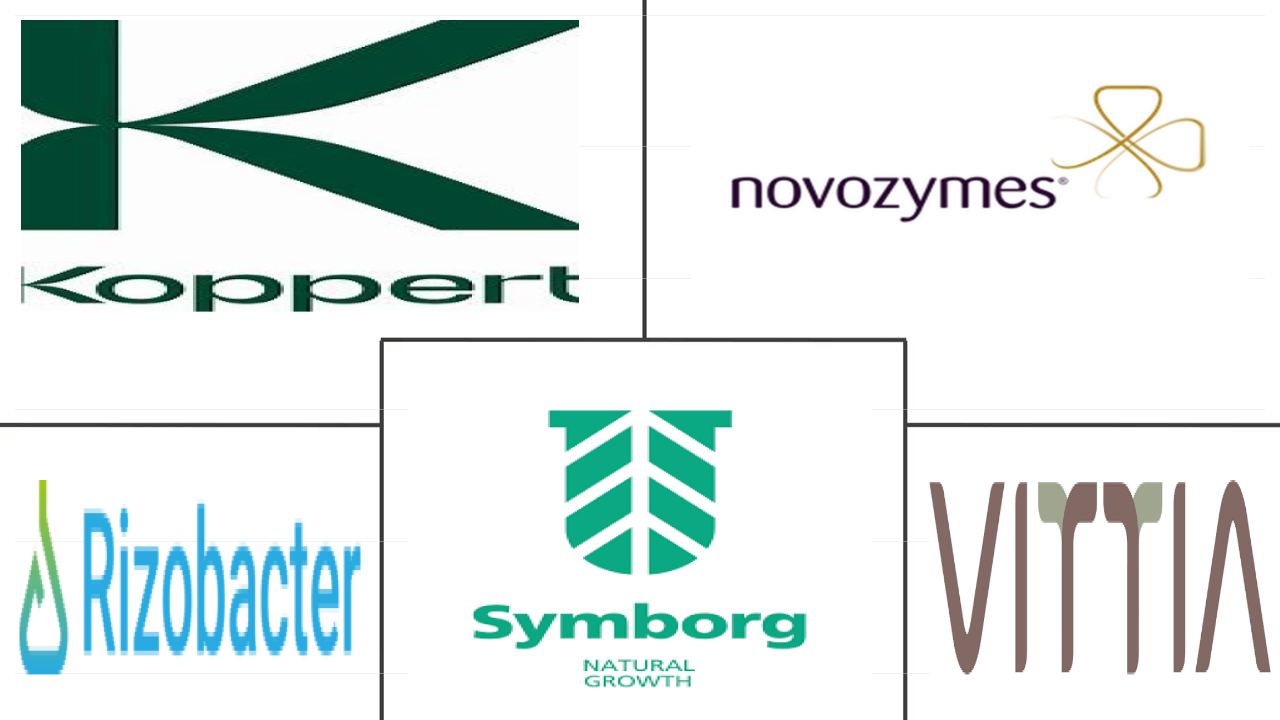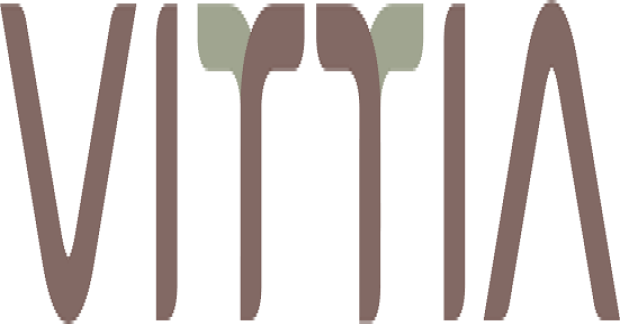Market Size of south america biofertilizer Industry
|
|
Study Period | 2017 - 2029 |
|
|
Market Size (2024) | USD 200.72 Million |
|
|
Market Size (2029) | USD 325.74 Million |
|
|
Largest Share by Form | Azotobacter |
|
|
CAGR (2024 - 2029) | 10.17 % |
|
|
Largest Share by Country | Brazil |
Major Players |
||

|
||
|
*Disclaimer: Major Players sorted in no particular order |
South America Biofertilizer Market Analysis
The South America Biofertilizer Market size is estimated at 200.72 million USD in 2024, and is expected to reach 325.74 million USD by 2029, growing at a CAGR of 10.17% during the forecast period (2024-2029).
200.72 Million
Market Size in 2024 (USD)
325.74 Million
Market Size in 2029 (USD)
4.87 %
CAGR (2017-2023)
10.17 %
CAGR (2024-2029)
Largest by Form
28.46 %
value share, Azotobacter, 2023
Azotobacter can fix 2.5 × 1011 kg of N-NH3 annually and 1 ton of this nitrogen can equate the 2 tons of industrially produced mineral nitrogen in crop production.
Fastest by Form
11.65 %
Projected CAGR, Rhizobium, 2024-2029
Application of rhizobium is known to reduce the cost of production as it as fix 40-250 kg of nitrogen in the soil and reduces the application of Urea by 55 to 200 kg.
Largest by Crop Type
82.25 %
value share, Row Crops, 2023
The dominance of row crops is primarily due to its growing organic area acreages, which has increased by 39.5% during the historic period to reach 2.3 lakh hectares in 2021.
Largest by Country
65.02 %
value share, Brazil, 2023
Brazil is an important Agricultural country in South America and the country accounts for 65.3% share of the total biofertilizer consumption in the region in 2022.
Leading Market Player
7.45 %
market share, Vittia Group, 2022

Vittia Group has four distribution centers and a distribution network across the country. They have a team of agronomists who assist the farmers in taking right decisions
- Biofertilizers are a sustainable and eco-friendly way of enhancing plant growth and productivity. They are composed of living microorganisms that can improve the soil's nutrient content, making essential elements more accessible to plants. Some of the most commonly used biofertilizers include mycorrhiza, Azospirillum, Azotobacter, Rhizobium, and phosphate-solubilizing bacteria.
- These microorganisms are selected for their ability to improve the soil's health and fertility, providing crops with the nutrients required. They work by either breaking down organic matter to release essential nutrients or directly increasing the availability of specific nutrients in the soil.
- Azotobacter accounted for 28.6% of the total biofertilizers consumed in the region. Field tests on Azotobacter under various agro-climatic conditions revealed that the biofertilizer is suitable for inoculating with seeds or seedlings of crops such as onion, tomato, and cabbage. Under typical field circumstances, Azotobacter inoculation reduces the need for nitrogenous fertilizers in these crops by 10-20%. Thus, the usage of Azotobacter in agriculture is expected to grow in the coming years.
- Research in Brazil has demonstrated that the combination of two strains of Azospirillum brasilense, Ab-V5 and Ab-V6, increased yields in key crops such as soybean, sugarcane, rice, wheat, and pasture. The application of these two strains is also compatible with other pesticides commonly used in these crops.
- The market for biofertilizers in the region is expected to grow due to the rising demand for organically-grown food and the government's emphasis on the importance of sustainable agricultural practices to keep the soil and environment safer.
- Brazil is a leading agriculture nation in South America and held 65.3% of the total biofertilizer market in the region in 2022. The country's farmers are keeping up with the worldwide demand for organic food and achieved organic food sales worth USD 81.0 million in 2021, which rose 9.5% compared to the previous year, as per the Global Organic Trade.
- The area under cultivation of organic crops in the region increased during the historical period (2017-2022) from 495.7 thousand hectares in 2017 to 717.2 thousand hectares in 2021. The increasing trend in the overall organic crop is expected to drive the market for biofertilizers in these countries and is estimated to register a CAGR of 10.0% during the forecast period (2023-2029).
- With growing concern for soil and environmental pollution, the government and other organizations are highly promoting the usage of biological crop inputs across the region. In Argentina, the FAO's 2022-2031 Strategic Framework prioritizes transforming agri-food systems to be more efficient and sustainable, using agroeconomic methods, with a focus on reducing the use of chemical fertilizers and pesticides in agriculture. This opens up opportunities for adopting biofertilizers as a more sustainable alternative.
- Moreover, there has been a remarkable increase in the crop yield of leguminous crops. Strains of rhizobium produce growth hormones like indole acetic acid, which influences positive growth in plants by stimulating the formation and development of root nodules quickly. The advantages of biofertilizer usage are expected to drive their usage in South America. However, less awareness among the farmers and the long transition period from chemical farming to organic farming are slightly hindering the market growth of biofertilizers.
South America Biofertilizer Industry Segmentation
Azospirillum, Azotobacter, Mycorrhiza, Phosphate Solubilizing Bacteria, Rhizobium are covered as segments by Form. Cash Crops, Horticultural Crops, Row Crops are covered as segments by Crop Type. Argentina, Brazil are covered as segments by Country.
- Biofertilizers are a sustainable and eco-friendly way of enhancing plant growth and productivity. They are composed of living microorganisms that can improve the soil's nutrient content, making essential elements more accessible to plants. Some of the most commonly used biofertilizers include mycorrhiza, Azospirillum, Azotobacter, Rhizobium, and phosphate-solubilizing bacteria.
- These microorganisms are selected for their ability to improve the soil's health and fertility, providing crops with the nutrients required. They work by either breaking down organic matter to release essential nutrients or directly increasing the availability of specific nutrients in the soil.
- Azotobacter accounted for 28.6% of the total biofertilizers consumed in the region. Field tests on Azotobacter under various agro-climatic conditions revealed that the biofertilizer is suitable for inoculating with seeds or seedlings of crops such as onion, tomato, and cabbage. Under typical field circumstances, Azotobacter inoculation reduces the need for nitrogenous fertilizers in these crops by 10-20%. Thus, the usage of Azotobacter in agriculture is expected to grow in the coming years.
- Research in Brazil has demonstrated that the combination of two strains of Azospirillum brasilense, Ab-V5 and Ab-V6, increased yields in key crops such as soybean, sugarcane, rice, wheat, and pasture. The application of these two strains is also compatible with other pesticides commonly used in these crops.
- The market for biofertilizers in the region is expected to grow due to the rising demand for organically-grown food and the government's emphasis on the importance of sustainable agricultural practices to keep the soil and environment safer.
| Form | |
| Azospirillum | |
| Azotobacter | |
| Mycorrhiza | |
| Phosphate Solubilizing Bacteria | |
| Rhizobium | |
| Other Biofertilizers |
| Crop Type | |
| Cash Crops | |
| Horticultural Crops | |
| Row Crops |
| Country | |
| Argentina | |
| Brazil | |
| Rest of South America |
South America Biofertilizer Market Size Summary
The South America biofertilizer market is poised for significant growth, driven by the increasing demand for sustainable agricultural practices and organically grown food. Biofertilizers, which are composed of living microorganisms, enhance soil fertility and plant productivity by making essential nutrients more accessible to crops. Key microorganisms used in this market include mycorrhiza, Azospirillum, Azotobacter, Rhizobium, and phosphate-solubilizing bacteria. These biofertilizers are gaining traction due to their ability to reduce the reliance on chemical fertilizers, thereby promoting eco-friendly farming solutions. Brazil, as a leading agricultural nation in the region, plays a pivotal role in this market, with a substantial share attributed to its organic food sales and cultivation of organic crops. The government's focus on sustainable agricultural practices further bolsters the market's expansion, as seen in initiatives across countries like Argentina, which prioritize reducing chemical inputs in farming.
The market landscape is characterized by a fragmented structure, with major players such as Koppert Biological Systems Inc., Novozymes, Rizobacter, Symborg Inc., and Vittia Group leading the charge. These companies are actively investing in production facilities and strategic acquisitions to strengthen their market presence and develop innovative biofertilizer solutions. Despite the promising growth prospects, challenges such as limited awareness among farmers and the transition period from chemical to organic farming pose hurdles to market expansion. However, the increasing consumer awareness and demand for organic products, coupled with supportive government policies, are expected to drive the adoption of biofertilizers in South America. The region's commitment to sustainable farming practices and the growing market for organic food products underscore the potential for biofertilizers to play a crucial role in the future of agriculture in South America.
South America Biofertilizer Market Size - Table of Contents
-
1. MARKET SEGMENTATION (includes market size in Value in USD and Volume, Forecasts up to 2029 and analysis of growth prospects)
-
1.1 Form
-
1.1.1 Azospirillum
-
1.1.2 Azotobacter
-
1.1.3 Mycorrhiza
-
1.1.4 Phosphate Solubilizing Bacteria
-
1.1.5 Rhizobium
-
1.1.6 Other Biofertilizers
-
-
1.2 Crop Type
-
1.2.1 Cash Crops
-
1.2.2 Horticultural Crops
-
1.2.3 Row Crops
-
-
1.3 Country
-
1.3.1 Argentina
-
1.3.2 Brazil
-
1.3.3 Rest of South America
-
-
South America Biofertilizer Market Size FAQs
How big is the South America Biofertilizer Market?
The South America Biofertilizer Market size is expected to reach USD 200.72 million in 2024 and grow at a CAGR of 10.17% to reach USD 325.74 million by 2029.
What is the current South America Biofertilizer Market size?
In 2024, the South America Biofertilizer Market size is expected to reach USD 200.72 million.

